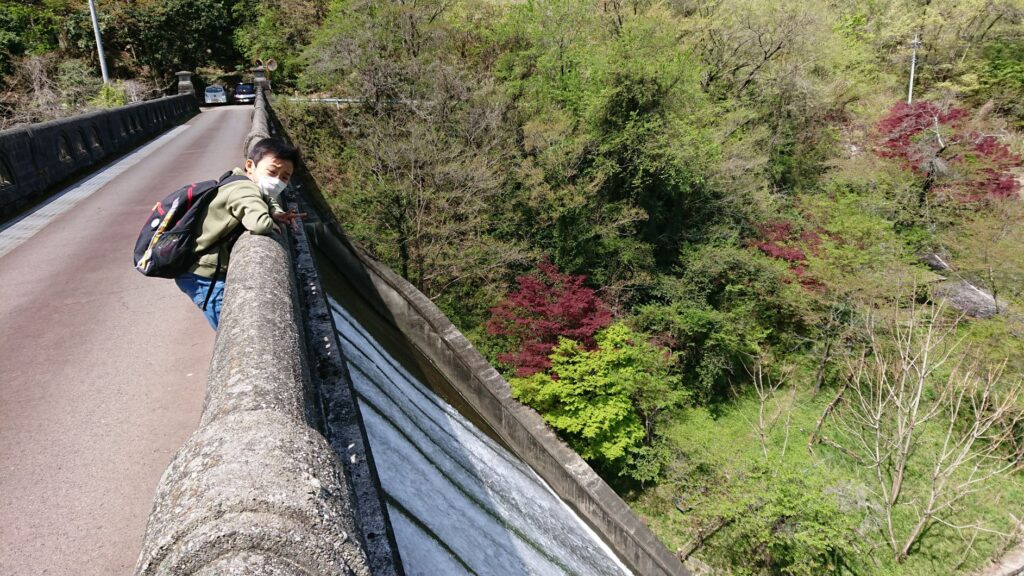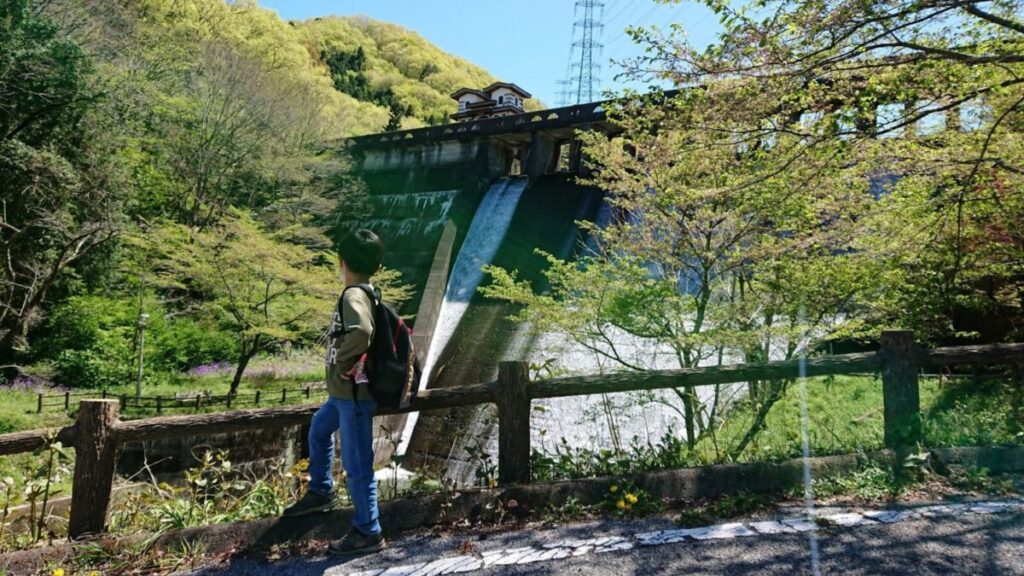
Meet Second Son, a rural dweller from Japan. Although he spent his childhood surrounded by fields and rice paddies, as an adult, he has settled into a lifestyle that doesn’t exert his body beyond the demands of daily life.
Then came the era of COVID-19, urging people to refrain from going out, and schools were closed. Feeling a bit sorry for Second Son not being able to go out at all, one Sunday, he decided to take 2-1 along for a hike to the nearby mountains with Grandpa and Grandma.
And so, here’s the record of that particular day.
Maze Dam(間瀬ダム)

The destination, chosen for its ease of walking and the opportunity to enjoy a relaxed time on-site, is the familiar small lake from Second Son’s childhood, known as Maze Dam. Maze Lake is a small artificial lake created by an existing concrete dam for irrigation purposes, considered the oldest in East Japan.
For those in the Kanto region who enjoy fishing, it might be a familiar spot. On this day, the boats lining the lake were quite impressive.
This region is recommended for those who want to enjoy the laid-back countryside of Saitama. While there are no flashy tourist spots, it’s a place filled with memories that Second Son has occasionally visited since his childhood.
The surrounding area is a village known as “Takamado no Sato,” which retains the strong presence of the once-prosperous sericulture (silk farming) in Joushu, a region in northern Kanto.
Although Grandpa and Grandma’s house used to be a sericulture farmhouse with high windows, after several renovations, it has strayed far from its original charm. Second Son wanted to show 2-1 the original appearance, so they casually explored the surroundings and arrived at the park’s parking lot.
Heading towards the Maze Dam

The starting point is a park about 3 km from “Mase Lake (Maze Dam).” Second Son also visited the Seisin-in Hyakutai Kannon Hall during an elementary school field trip.
This hall is adjacent to the park, known as Sazae-do. Sazae-do is a unique architectural style of Buddhist hall seen in the late Edo period in the Tohoku and Kanto regions. The building’s interior is a spiral structure of corridors, allowing pilgrims to follow the route to view various Buddha statues.
After leaving Sazae-do, a couple of hundred meters into the hike, 2-1, requesting a break with the words “I’m tired,” was left behind twice. Climbing a gentle slope and passing a corner, the nostalgic Maze Dam embankment comes into view.
The landscape, seen countless times, seemed to have no difference from memories 10 or 20 years ago, and Second Son arrived at the primary destination, the Maze Dam, with deep emotions.
Despite being along the prefectural road, there is still no parking space around the dam embankment, except for the roadside, and you still need to be cautious about oncoming traffic.
Observing the lake at full capacity and the anglers enjoying fishing, they took a peek into the management building and took a short break. Actually, this time, Second Son recognized for the first time that it was registered as a tangible cultural property in 2000.
For some reason, he bragged to 2-1 about it, and in a good mood, they resumed hiking towards the second destination, the Second Masase, which is also a sand control embankment for Maze Dam.

Heading about 1.5 km further upstream from Maze Dam, walking along a gently sloping road beside the lake, Second Son arrived at today’s second destination, ‘Second Maze Lake.’
In his junior high school days, he often rode a bicycle uphill to fish for black bass, making it a memorable place. In the distant memories of Second Son, when someone mentions Maze Lake, it is recognized as a fishing spot for black bass and bluegill.
For those a bit older, it is known as a fishing spot for crucian carp, but it seemed that many people still visit for crucian carp fishing.
However, there were no crucian carp anglers at Second Maze Lake. Mainly, people visit for bluegill, black bass, and carp fishing. On this day, a few lure anglers were seen enjoying themselves with their rods in a distant spot.



